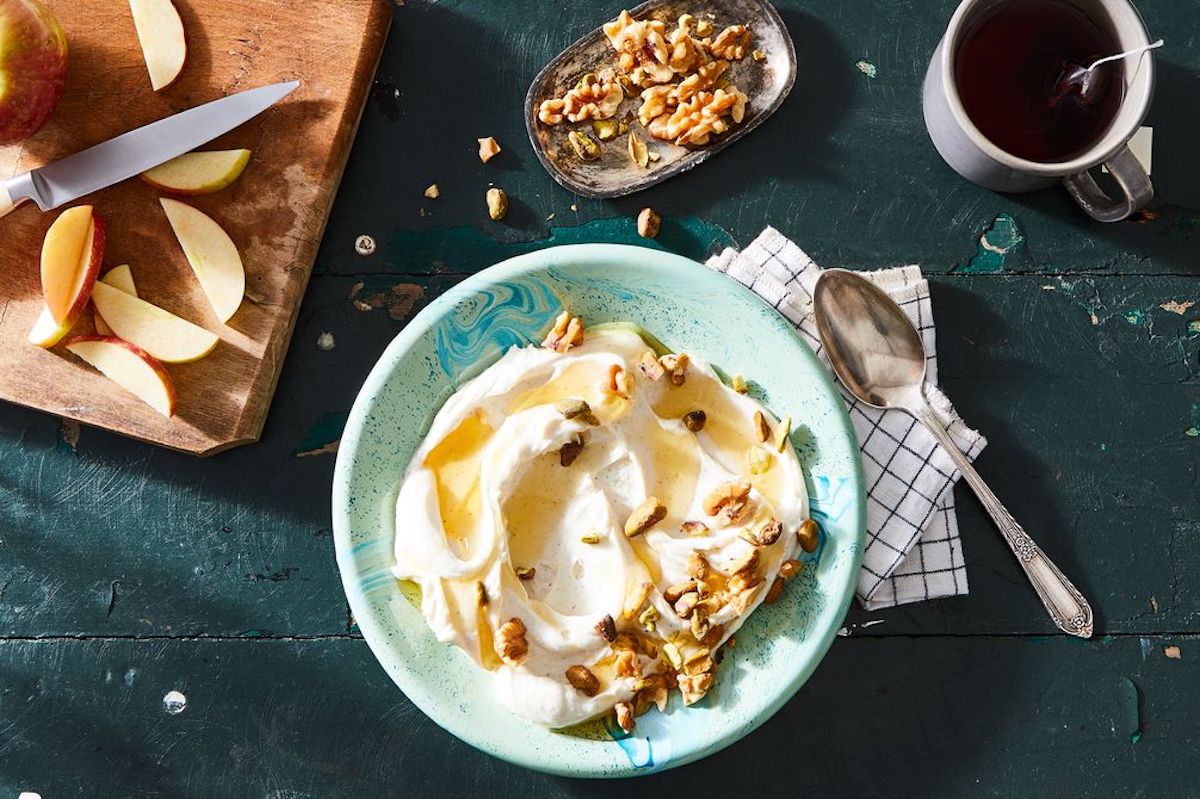Ah, cream cheese. We know it, we love it, it’s our old standby bagel topping. But this tangy spread is so much more than a schmear. Cream cheese is a rich dairy product that makes an amazing addition to pastries, pastas, and more, adding a smooth, rich quality to everything it touches. But it can be tricky to work with when cold: it sticks to itself, clumping together, and nobody wants lumpy frosting, am I right? For this reason, when it comes to working the stuff into recipes, especially desserts, most recipes call for softened cream cheese. Once it comes to room temperature, cream cheese can properly incorporate into a batter or emulsify a frosting.
How to soften cream cheese in the microwave
Since cream cheese has such a high fat content, it doesn’t take long to come to room temperature if the room is relatively warm. It takes about thirty minutes on the counter to soften significantly, and about an hour to fully come to room temperature (again, depending on the temperature outside and in your kitchen). But if you’re strapped for time, or have a sudden craving for cheesecake, you can cut that time down to seconds. Remove any packaging (especially foil!) and place the block of cream cheese on a microwave-safe plate. Microwave on high for 15 seconds, then poke the center of the cream cheese block to test the texture. If it’s still not your desired softness, continue microwaving in 10-second intervals, but err on the side of caution. A little firmer is better than melted, which will be hard to salvage and potentially unusable in a recipe. The cream cheese should feel soft and hold a fingerprint when pressed.
How to soften cream cheese at room temperature
My all-time favorite way to soften cream cheese (and butter, for that matter) faster than a block sitting on the counter, and without a microwave, is the method I learned from My Baking Addiction. It’s called “the cube method”: unwrap the cream cheese, cut it into smaller pieces or cubes, and leave them on a plate or in a bowl to soften. With more surface area exposed to the room’s temperature, and less mass to thaw, small pieces soften faster than a solid block. Plus, when it comes time to incorporate them into your batter, these smaller cubes of cream cheese are easier to distribute evenly throughout your mix. I call that a win-win.
On whipped cream cheese
While whipped cream cheese might seem like a natural substitute for softened cream cheese since it’s spreadable, I don’t recommend it as a substitute in most recipes. While undetectable in its whipped state, it’s actually grainier in texture (while block cream cheese is made by adding cheese culture to milk and cream, whipped cream cheese is set with lactic acid, a quicker alternative). It may be less noticeable in something like frosting, but it can affect the texture of cakes batter or cookie dough, and ultimately yields a less smooth final product. For that reason, I always recommend sticking to the block. Plus, who wants to pay for air?
Now that your cream cheese is soft, let’s cook
Beautiful Bakes
This no-bake cheesecake whips up in just a few minutes and tastes like a cross between key lime pie and cheesecake.
Meyer Lemon Cheesecake with Biscoff Crust
Take advantage of winter citrus and make this Meyer Lemon Cheesecake. It’s zingy, fresh, and has an outrageously irresistible crust made with Biscoff biscuits (also known as the reason you can’t stop eating cookie butter out of the jar with a spoon).
More of a cookie person? Enter: rugelach, a rolled cookie made with a sweet, soft dough surrounding a filling of nuts, jam, cinnamon, chocolate, or some combination therein. What’s not to love?
Don’t forget the frosting
Naturally-Dyed Red Velvet Cake with Cream Cheese Frosting
Cinnamon Rolls with Cream Cheese Frosting
Susan Miglore’s Fudgy Cream Cheese Chocolate Cake
In my book, “CC frosting,” as we called it at the bakery where I used to work, qualifies as an IPTSOE (I Put This Stuff on Everything). To me, anything buttercream can do, cream cheese frosting can do better. Enter: Cinnamon rolls, carrot cake, chocolate cake, and of course red velvet cake. Cream cheese provides a slightly acidic tang that counters powdered sugar-based frosting’s cloying tendency in a way that butter simply can’t. I challenge you to swap cream cheese frosting for buttercream on your next birthday cake, and watch as the compliments come rolling in.
If you’re “not a dessert person”
Chrissy Teigen’s Everything Bagel Cream Cheese Breakfast Bake
Creamy, Cheesy Artichoke & Chicken Pasta Bake
Lemony Cream Cheese Pancakes with Blueberries
The next time Sunday morning rolls around and you’re preheating the griddle, add some cream cheese to your pancakes, like these ethereal lemony ones. If you opt for savory brunch, take it from Tiegen (Chrissy, that is) and bake up this everything bagel casserole. Or ditch your brunch plans altogether and save the cream cheese for dinner, where it can make any creamy, cheesy pasta even more silky and rich.
However you choose to cook with it, cream cheese brings zing and undeniable richness to savory dishes and desserts alike. And if you have some left over from your bake, when in doubt, there’s no better reason to make homemade bagels.


